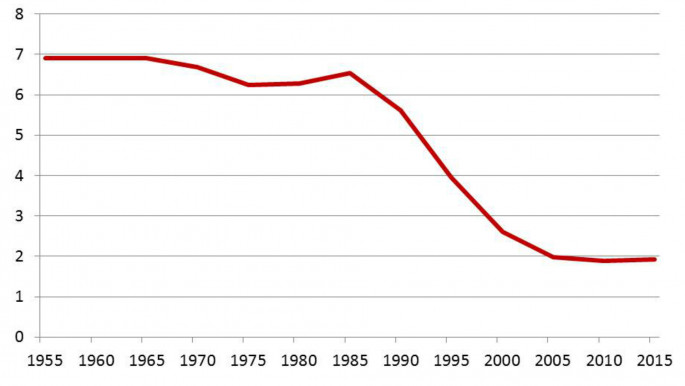Iran's 'misguided attempt' at boosting population sparks anger
Iran is considering two separate bills aimed at boosting its population, which if adopted, will have serious consequences for women and teenage girls, Amnesty International warned on Wednesday.
The Iranian parliament is looking to reverse its progressive laws on family planning, after officials expressed alarm at its ageing population, warning that the population growth rate could fall to zero "within 30 years".
The draft legislation comes in response to a call by Supreme Leader Ayatollah Ali Khamenei to double Iran's population to 150 million within 50 years.
However, the London-based human rights group views the move as a "misguided attempt" to boost the country's declining population rates, stating that it will set Iranian women back decades and reduce them to "baby-making machines".
"The authorities are promoting a dangerous culture in which women are stripped of key rights and viewed as baby-making machines rather than human beings with fundamental rights to make choices about their own bodies and lives" said Hassiba Hadj Sahraoui, deputy director for the Middle East and North Africa at Amnesty International.
The first bill - which was passed in parliament with an overwhelming majority in August 2014 and is undergoing amendments - would ban voluntary sterilisation, believed to be the second most common method of modern contraception in Iran.
It will also block access to information about contraception, denying women the opportunity to make informed decisions about having children.
"By abolishing family planning programmes and blocking access to vital sexual and reproductive health services, the authorities would be exposing women to serious health risks, and violating their human rights," Sahraoui stated.
Without such access, women will either have to carry their pregnancies to term when it is not their choice to do so; or risk their life and health by undergoing unsafe, clandestine abortions.
Unsafe abortions are among the leading causes of maternal mortality worldwide.
According to the World Health Organization, unsafe abortions led to the deaths of 47,000 women in 2008 and caused disabilities among five million women.
Around 215,000 maternal deaths could be avoided through the use of contraception, according to the UN Population Fund.
Reassessing priorities
The second draft law, which is to go before parliament next month, would require both public and private employers to give priority to men and women with children when hiring for certain jobs.
It instructs all entities to prioritise, in sequence, men with children, married men without children and married women with children when hiring for certain jobs.
It would also make divorce more difficult and restrict intervention by the state in family disputes, which Amnesty said would expose women to increased risks of domestic violence.
 |
|
| Iran: Average births per woman [UN] |
For more than two decades, Iran has followed an effective birth control programme, providing millions of women in the country with access to affordable modern contraception, subsidised vasectomies and free condoms.
In 1976, only 37 percent of women were using at least one method of contraception; by 2000 this figure had reportedly risen to 72 percent.
However, last year Khamenei said Iran would face an ageing population in the coming years if couples refused to have more children.
In 1980, birth rate figures were at seven births per woman, but this has dramatically fallen to 1.85 in 2014.
Iranian authorities are seeking to increase the population from 78.5 million to 150-200 million in the coming decades.
But Sahraoui believes the bills send out a message that women are "good for nothing more than being obedient housewives and creating babies" adding that it also suggests they do not have the right to work or pursue a career until they have fulfilled that primary role and duty.
Women currently make up around 60 percent of university students in Iran, while just ten percent of economically active women are employed, according to official figures.





 Follow the Middle East's top stories in English at The New Arab on Google News
Follow the Middle East's top stories in English at The New Arab on Google News
![The UAE is widely suspected of arming the RSF militia [Getty]](/sites/default/files/styles/image_330x185/public/2024-11/GettyImages-472529908.jpg?h=69f2b9d0&itok=Yauw3YTG)
![Netanyahu furiously denounced the ICC [Getty]](/sites/default/files/styles/image_330x185/public/2024-11/GettyImages-2169352575.jpg?h=199d8c1f&itok=-vRiruf5)
![Both Hamas and the Palestinian Authority welcomed the ICC arrest warrants [Getty]](/sites/default/files/styles/image_330x185/public/2024-11/GettyImages-2178351173.jpg?h=199d8c1f&itok=TV858iVg)